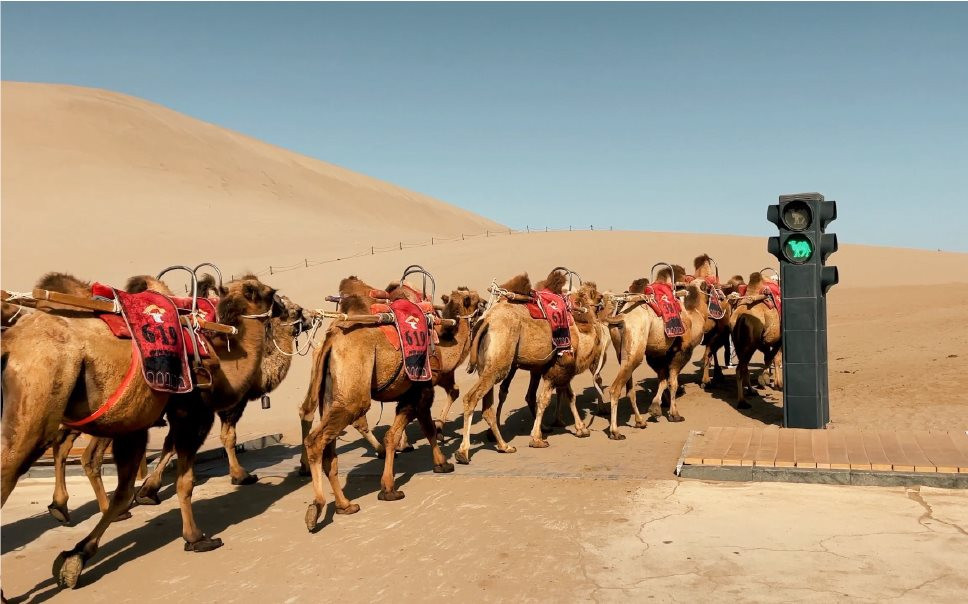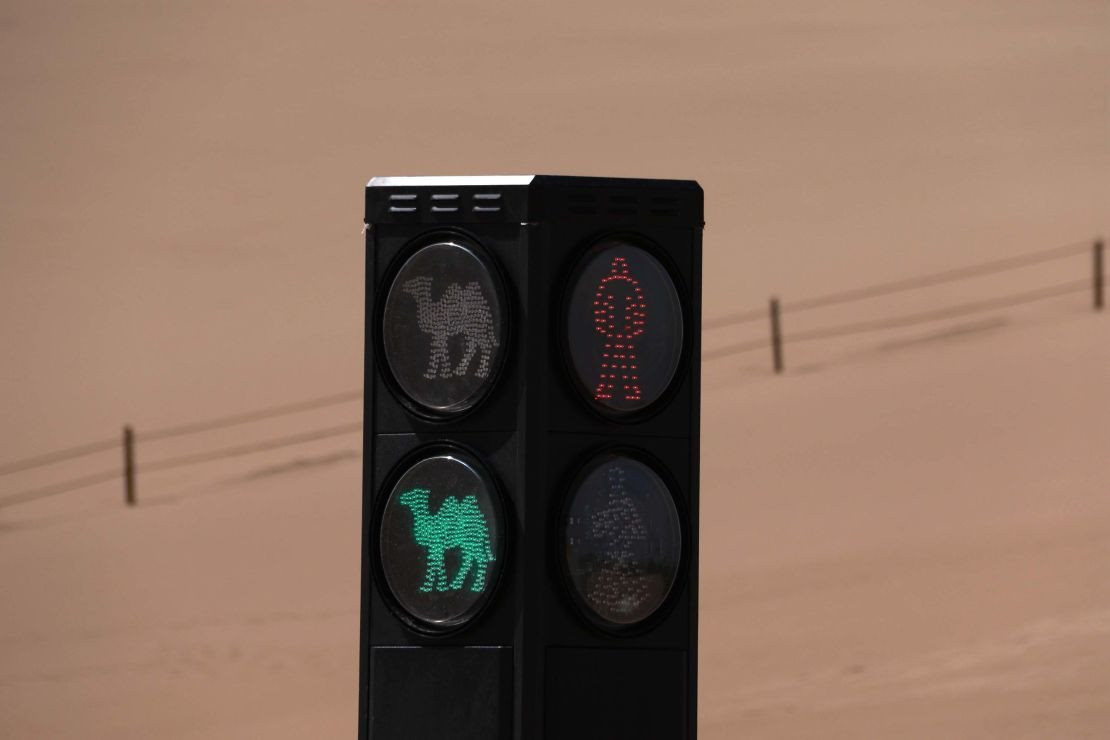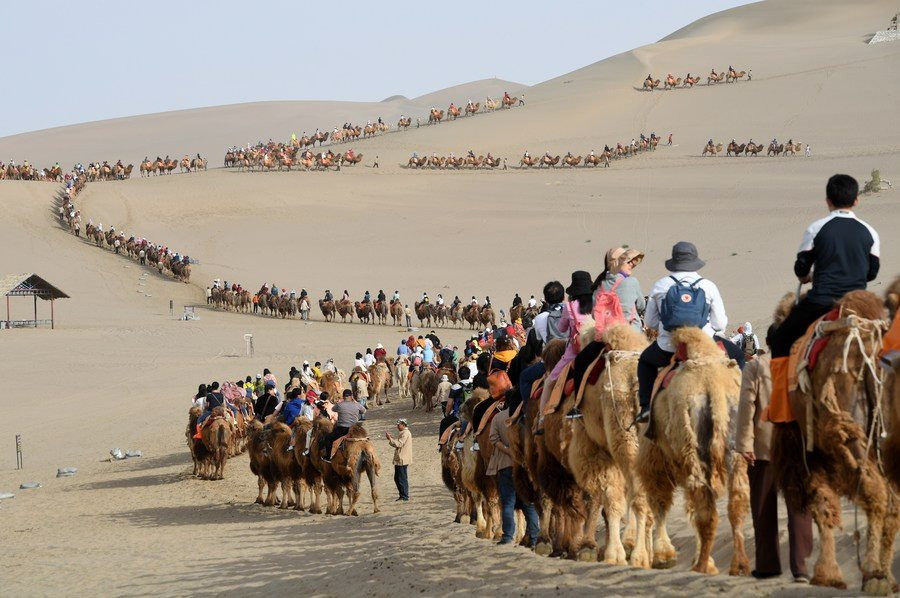Authorities in Gansu Province, China, have installed traffic lights specifically for camels to reduce tourist congestion during peak holiday seasons.

Camel rides in the desert are a popular activity in the Mingsha and Crescent Springs Scenic Areas in Dunhuang, Gansu. During the peak holiday season last month, local authorities had to mobilize about 2,400 camels to serve the needs of tourists.
At the intersection of the pedestrian path and the camel path in the desert, a special traffic light system has been installed. When the light is green, the camel can cross. If the light is red, the animal must stop to let the pedestrian pass.

The "camel traffic light" idea, which was realized last year, has unintentionally helped the Minh Sa mountain tourist area attract more visitors to visit and take photos.
In 2023, on the first day of May, the place welcomed more than 10,000 visitors, and this number increased to 20,000 in the following days of the holiday. By the end of the year, the number of visitors to the scenic spot reached 3.7 million.
Some tourists choose to walk along the ancient Silk Road, but most people take in the sights on camel back. This is the main reason why this desert route was jammed with camels for miles for years.
By installing traffic lights, the problem was partially solved.

The surge in tourists has brought significant revenue to local camel breeders. Zhao Wenlong is one of the beneficiaries. Zhao, 42, is an experienced camel breeder in Yueyaquan Village.
In the 1990s, there were only a few camel herders in the village. Locals used to rely on apricot farming as their main source of income. However, because the village is located near the desert, farmland is often submerged by sandstorms, leading to crop failures and low profits.
“Our village was so poor that there were almost no girls willing to marry men here,” recalled village chief Qin Zuotao.
The rapid development of tourism has given hope to the villagers.
A popular tourist activity that started out as a photo op on camel backs has evolved into short camel rides. Now visitors can opt for hour-long camel tours.
A normal camel ride costs 100 yuan (about 350,000 VND), and the camel owner earns 70 yuan (about 245,000 VND).
Summer is the peak season here. To keep the camels healthy, people have to provide them with nutritious food and fresh fruit to cool them down. The animals are also taken to the veterinarian for general health check-ups.
Mr. Qin said that 80% of the village's 274 households have camels for tourism purposes.
Besides taking care of camels, many locals also learn basic English to communicate better with foreign tourists.
Over the years, Mr. Zhao has accumulated valuable experience in maintaining and developing tourism business.
He invested in two more rare camels, one white and one with mixed coats, after he noticed that some tourists liked to pose for photos on the backs of camels with unusual coat colours.
VN (according to Vietnamnet)